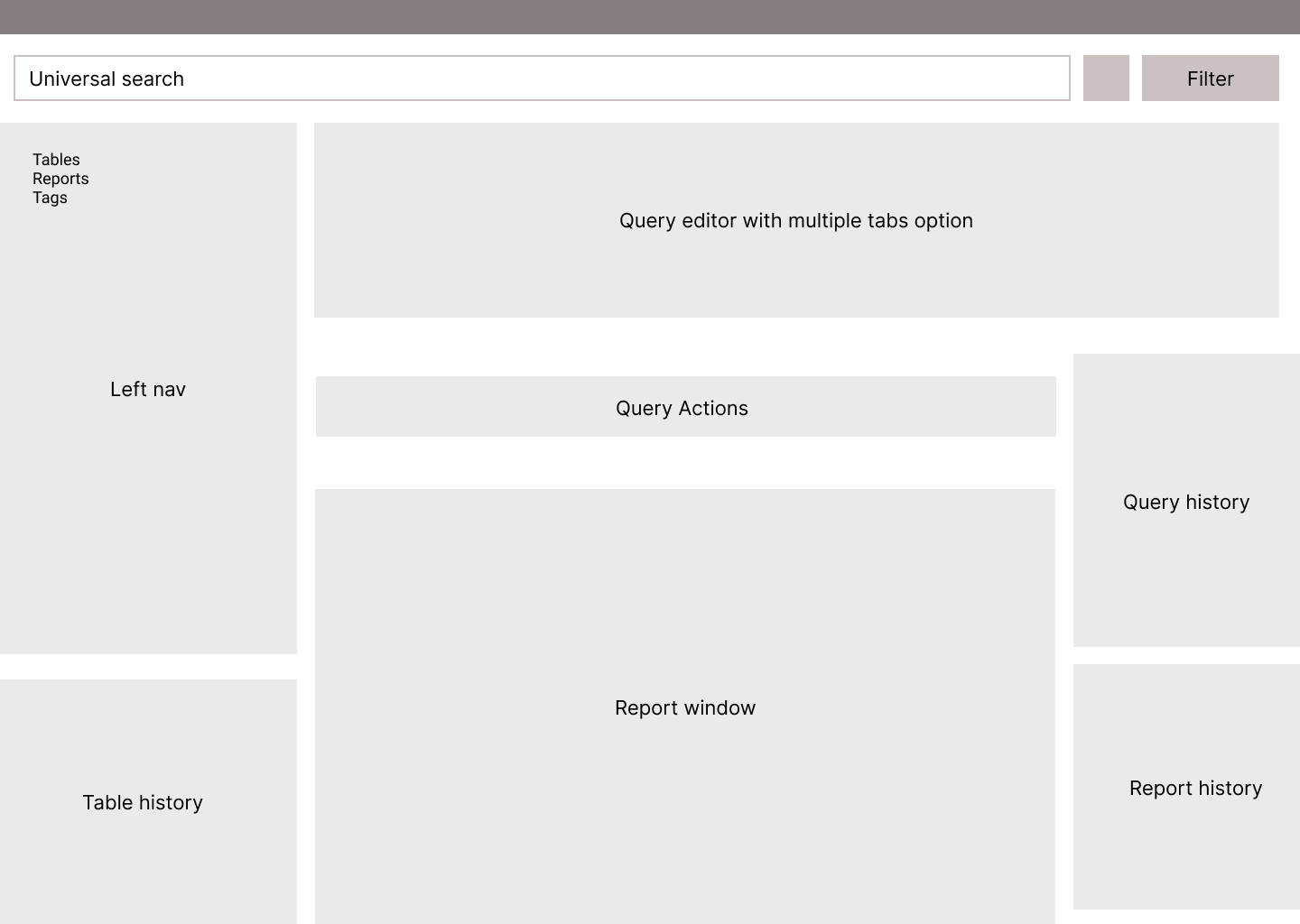Project
The Query Builder project aims to improve the discoverability and usability of reports, catering to both power users (data analysts, engineers) and novice users (business professionals, non-technical users). The design prioritizes an intuitive search, navigation, and report management experience to enhance productivity and efficiency.
Research & Insights
Primary Research: User Interviews
User interviews were conducted with two power users and two novice users to uncover their pain points and feature requests.
Key Pain Points
Power Users (Data Analysts, Data Scientists, Engineers)
- “It's hard to find past reports unless I remember the exact name.”
- “I need quick filtering by execution status (successful, failed, in progress).”
- “Would love a way to favorite or pin reports I use often.”
- “Sometimes I need to duplicate a report and modify it instead of starting from scratch.”
Novice Users (Business Users, Non-Technical Users)
- “I don’t always know what a report does just by the name—I'd like more metadata.”
- “The current search is too exact. I wish I could search by tags, author, or time range.”
- “I don’t understand SQL well, so I need visual cues to know which reports are important.”
- “The interface is cluttered with too many technical details I don’t need.”
Feature Requests
- Enhanced Search & Filtering: Search by author, tags, last modified date, execution status.
- Saved Reports: Ability to pin, favorite, and group frequently used reports.
- Preview & Metadata: Show descriptions, query summaries, and execution history before opening a report.
- Collaboration Tools: Display report access history, including who has viewed or edited a report.
Secondary Research: Industry Best Practices
A competitive analysis and UX research guided the implementation of the following best practices:
- Faceted Search: Filtering by author, last modified date, and execution status.
- Personalization: Features like pinning, favoriting, and AI-driven smart recommendations.
- AI-Assisted Suggestions: Auto-suggest related reports based on search behavior.
- Consistent Naming & Tagging: Structured metadata for improved searchability.

Design & Implementation
Power Users (Data Analysts, Data Scientists, Engineers)
- Standard User View: Simplified UI with intuitive search and filtering.
- Superuser Access Prompt: Password-protected access to advanced functionalities.
- Superuser Mode: Advanced features like version control, bulk actions, and query execution.
- Enhanced Search: Improved interface with metadata previews and filters.
Key UI Features & Functionality
Search & Filters
- Keyword Search: Locate reports by name, author, or tags.
- Faceted Filters: Refine results by date, execution status, author, and tags.
- Sorting Options: Organize reports by last modified date, execution time, and popularity.
- Enhanced Search: Improved interface with metadata previews and filters.
Report Navigation & Management
- Pinned & Favorited Reports: Quick access to frequently used reports.
- Shared Reports: Visibility into reports shared within the organization.
- Archived Reports: Storage for old reports without cluttering active lists.
Superuser Features
- Secure Access: Permission-based controls for modifying and deleting reports.
- Execution History & Logs: Track previous queries and report statuses.
- Bulk Actions: Superusers can rerun, delete, and modify multiple reports simultaneously.
Conclusion
The redesign of Query Builder significantly enhances report discoverability, usability, and navigation. By integrating advanced filtering, personalization, and collaboration tools, the platform balances the needs of both technical and non-technical users. These improvements ensure a seamless, efficient, and user-friendly experience for all stakeholders.